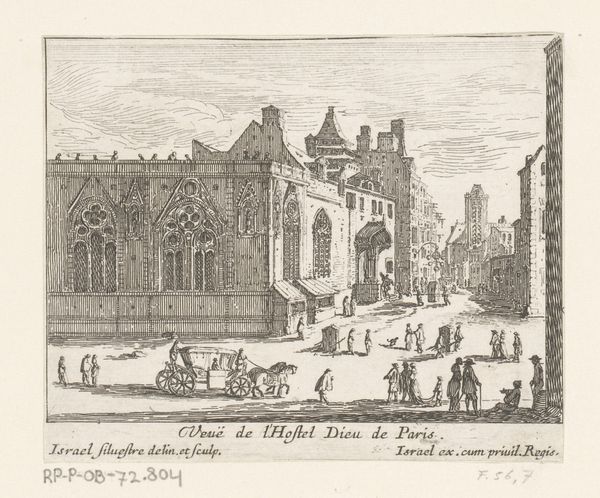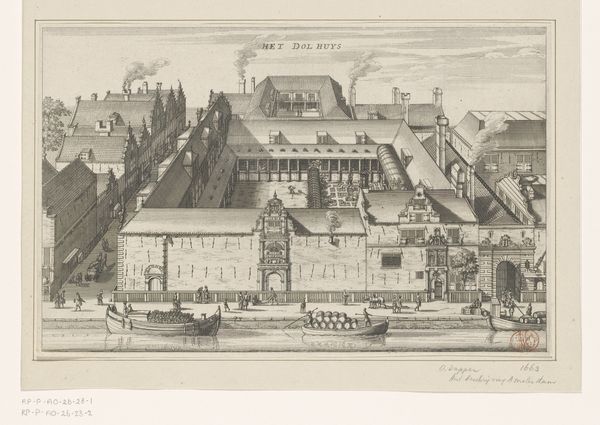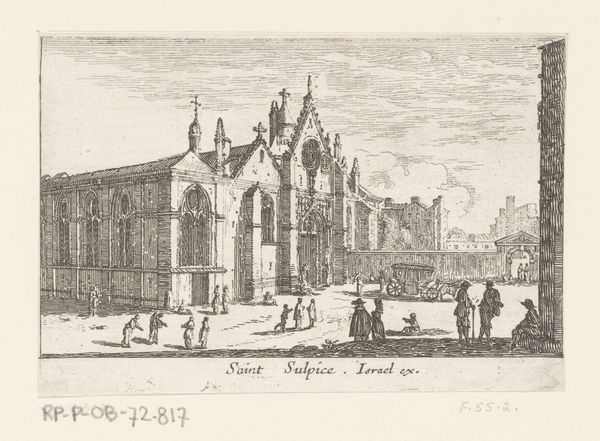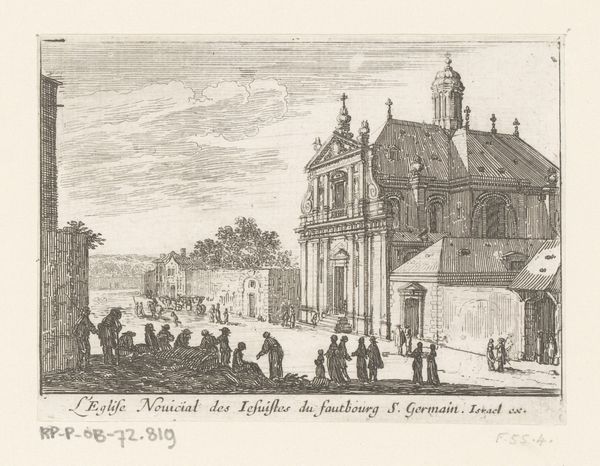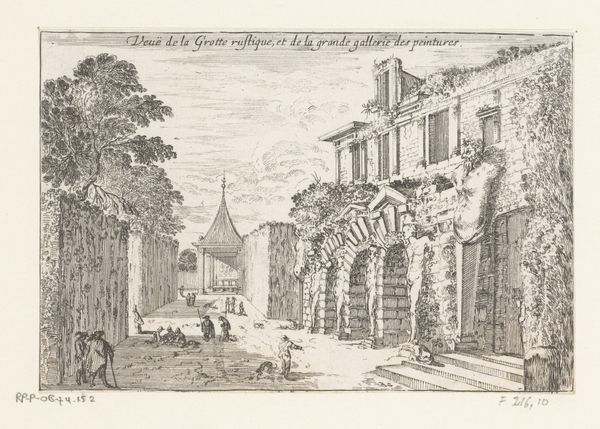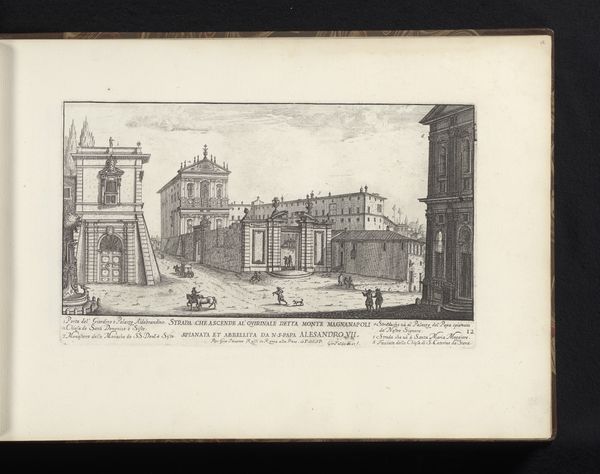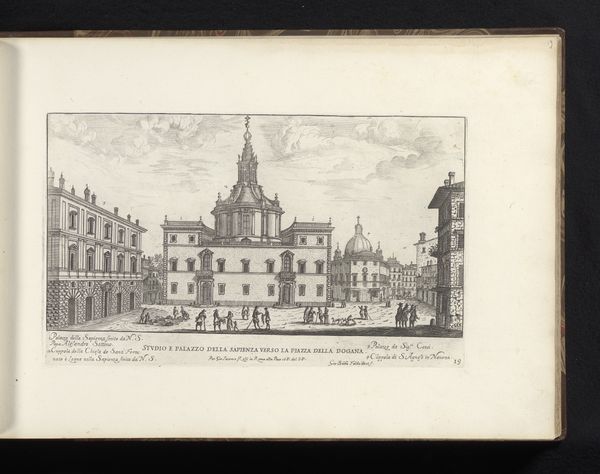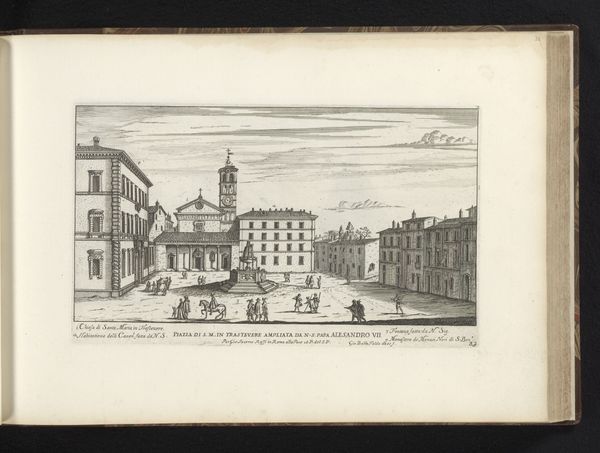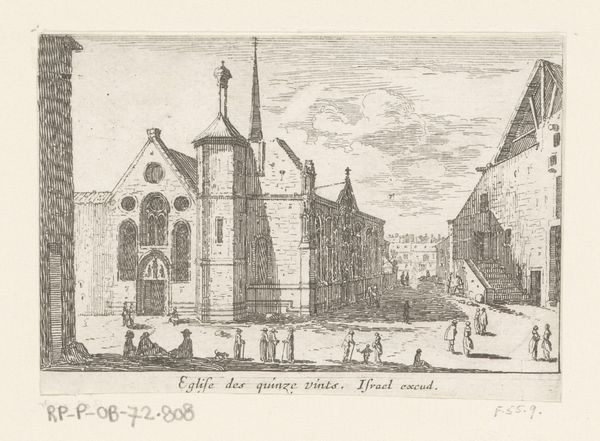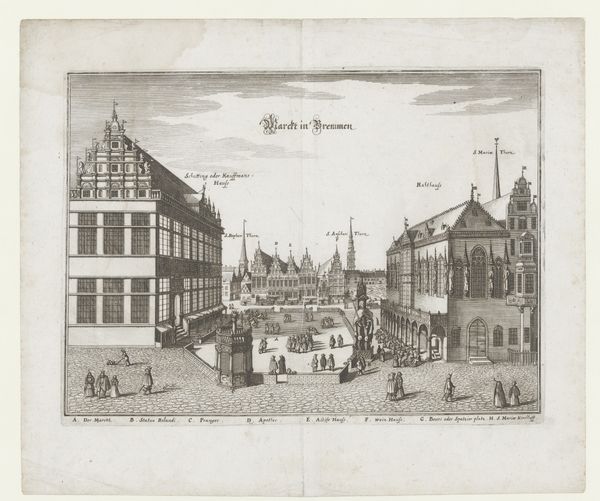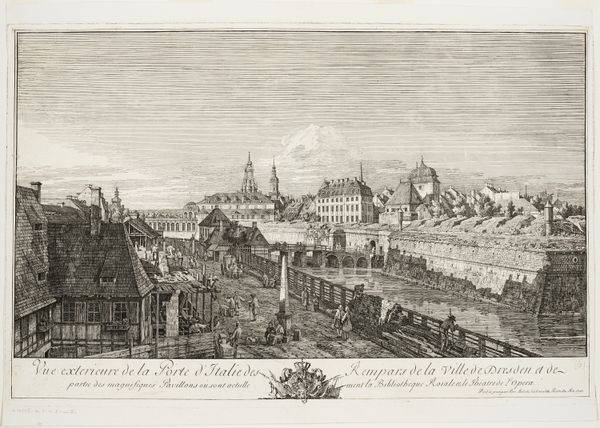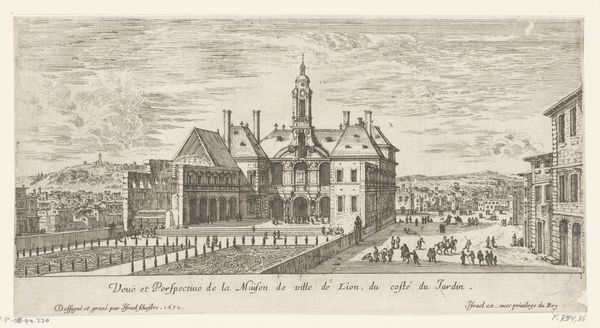
print, etching, engraving
#
pen and ink
#
baroque
# print
#
etching
#
landscape
#
cityscape
#
engraving
Dimensions: height 90 mm, width 110 mm
Copyright: Rijks Museum: Open Domain
Curator: We are looking at Israel Silvestre's "View of the Church of Sainte-Marie," created between 1631 and 1661, employing engraving and etching techniques. What strikes you initially about this cityscape? Editor: The overwhelming feeling is one of bustling formality. Despite the small figures, the composition conveys hierarchy and the weight of religious and societal structure through its architectural symbols. Curator: It’s important to note that Silvestre's work occurred during a time of immense socio-political upheaval, particularly concerning religion and state power. The prominent placement of the church isn't simply aesthetic; it speaks to the prevailing influence of religious institutions within civic life, especially affecting women's lived experience. Editor: Precisely. The church, with its commanding dome and spires, projects authority. But consider, too, the street-level details—the carriages, the pedestrians, even the way the light catches certain figures. There’s a tension created by how fleeting individual lives seem against these immutable structures. What might Sainte-Marie represent as a symbol? Curator: Sainte-Marie embodies complex intersections of piety, female roles, and perhaps even state control of social norms, particularly around the family and women's role in the period. It represents not only spiritual devotion but a gendered space regulated by the church's teachings. Editor: So, the image doesn't just offer a view of a building; it presents a worldview anchored by these encoded emblems. Note how even the clouds swirling above echo the dome, a subtle reinforcement of celestial and earthly authority. It also has strong connection to Virgin Mary as a religious icon in European culture. Curator: Absolutely, and when contextualizing with cultural and sociological trends of the time, we recognize it not just as art, but as a socio-political record of control and cultural construction. Editor: Considering its scale and intricacy, it is impressive how such symbolic communication could become widely distributed to the public, and I suppose, reinforce what it was designed to reflect back. Curator: Indeed. Thinking about it through that lens really heightens the impact it might have had at the time, doesn’t it?
Comments
No comments
Be the first to comment and join the conversation on the ultimate creative platform.
